CRITICAL REPORT
SD02
1. Introduction
- The role of design in catalysing social change
2. Platforms: Digital Infrastructure and Social Impact
- Overview of digital platforms
- The power of platform capitalism in shaping the world
- Platform capitalism and its discontents
- The power of platforms in monopolisation & further inequality
- The evolution of digital platforms and big tech’s trajectory
- The start of the Internet > The current state of the monopolised Web
- Where Are We Heading
- Re-contextualising Capitalism’s Definition of “Progression” Towards Making a Positive Community
3. RQ: How can platforms empower initiatives dedicated to positive community change by creating a new network of visibility & outreach?
- A Platform for Positive Change
- Representation and Community Empowerment
- Value Through Redirecting Public Outreach & Visibility
- Examples of Successful Platforms Empowering Positive Change in Their Fields
- Charity Navigator
- Kiva
- Freecycle
- Design in Art as a Medium for Change
- Me as A Designer, Why I Care, What I Do (Positionality Statement)
4. ONE EARTH
- Aims and Outcomes
- Setting Phase 1 of ONE EARTH
- Empowerment and Engagement
- Translating Aims and Core Values Through Design
- Themes
- Visuals and Identity
- The Logo and Language - UI Elements
- The Map
- The Documentary
5. Conclusion
- Have I answered the question posed?
- Immediate Goals
- Future Development
- Aspirations for 1EARTH
1. Introduction
a. The Role of Design in Catalysing Social Change
Design, as a powerful tool, is not merely limited to aesthetics and functionality, and has the potential to become a catalyst for social change. This report explores the transformative potential of design through digital platforms, particularly in how they have reshaped global interaction and community dynamics.
This report sets the foundation for my platform: ONE EARTH/1EARTH, which aims to amplify the efforts of initiatives making a positive impact within their communities. By creating a new network for public outreach and visibility, ONE EARTH/1EARTH fosters an environment of collective growth and collaboration among participants by connecting communities and highlighting movements. This aims to drive wider social change through a shared movement of engaging more people to recognise their individual roles in participating towards a more socially progressive future we all need.
First, I will contextualise my project within the framework of how current digital platforms such as Facebook, Uber, and Airbnb operate and scale up. I will delve into how these platforms have reshaped markets, monopolised web interactions and perpetuated systemic inequalities, a process rooted in how progression exists within capitalism: where growth and profit are prioritised over making a positive impact.
Subsequently, I will explore how platforms can facilitate social empowerment and positive systemic change, fostering unity, community engagement, and the decentralisation of power, evidenced through case studies.
This report will underscore the power of outreach & visibility as tools for empowerment, and the importance of further engaging the wider public in understanding their potential in impacting their own local communities.
2. Platforms: Digital Infrastructure and Social Impact
a. Overview of Digital Platforms
Digital platforms are infrastructures that “enable two or more groups to interact.” (Nick Srnicek, 2017), Platforms differ from traditional business models by creating value primarily through facilitating user interaction rather than a direct product or service delivery. The interaction facilitated on digital often tends to be for business transactions (of services/goods/information), examples include “powerful technology companies (Google, Facebook, and Amazon), dynamic start-ups (Uber, Airbnb), industrial leaders (GE, Siemens), and agricultural powerhouses (John Deere, Monsanto), to name just a few. ” (Nick Srnicek, 2017) . These platforms have all reshaped traditional economic and social landscapes.
b. The Power of Platform Capitalism In Shaping The World
Scalability and expansion are defining characteristics of platforms, the infrastructure they provide can be applied as a template for intermediated interactions to happen everywhere - for this to happen, they must have a digital environment which provides value to any party of its users, which ranges from “customers, advertisers, service providers, producers, suppliers” (Nick Srnicek, 2017). This concept of providing value was central to the development of 1EARTH. Through iterative processes, I worked towards creating a platform with a compelling and self-beneficial reason for users to engage.
In the realm of big tech, the expansive nature of their platforms has led to the centralisation of markets across numerous sectors. Globally, platforms have redirected revenue streams, for example, Google has used its platform to collect and sell user data for free for more efficient and targeted advertising, drawing “advertising revenues away from traditional media outlets like newspapers and television.” (Nick Srnicek, 2017). This newfound efficiency is what made Google dominate and create a monopoly on the advertising industry.
c. Platform Capitalism and Its Discontents
The concentration of power among a few tech giants has not only reshaped markets but also amplified systemic inequalities.
Case Study: Gojek in Indonesia
The rise of Gojek - a platform app intermediating travel and delivery in Indonesia, exemplifies platform capitalism's dual nature - enhancing service efficiency while perpetuating socioeconomic disparities. While "Gojek rationalized existing habits of travel and transaction, offering users affordable, dependable, fixed-rate and safe rides..." (Doreen Lee, 2018), the platform's economic model places undue burdens on its 2,000,000 drivers (Craig Smith, 2024) and the working conditions are controversial:
In 2021, couriers' income was cut by 40% and was met with nationwide strikes. The pay a courier received for delivering a package was cut from IDR 2,500 (£0.12)/package to IDR 1,500 (£0.08)/package (Arif Novianto, 2021). In other words, they no longer received a basic income equivalent to the provincial minimum wage. These new regulations were made possible because of the new structure of work in the gig economy, where “couriers are not workers, but are designated as independent contractors or ‘partners' of platform companies” (Arif Novianto, 2021). The company doesn’t have to abide by traditional business regulations, there is no health insurance, decent working hours, overtime pay, leave/holiday rights, or severance pay. Couriers also risk their safety at work and have to pay for their petrol.
The story of Gojek repeats itself across the whole world. In the US, the gig economy is heading towards overtaking the traditional job market if digital platform work continues to expand so rapidly (Karolina Kulach, 2023). The societal impact of how platforms intermediate the communities around them is clear - even though one party such as the consumer gains, the growth and scale of the platform is only made possible at the expense of another party such as the worker, this raises the common problem of capitalism where the number one interest of companies is efficiency and profit - and it’s normalisation as representing success in within society even amongst workers.
Through the development of 1EARTH, I aim to activate an understanding within my users that we need to shift and redefine what is determined as ‘success’, and by empowering those who make a positive impact, we can influence and transform broader societal values.
d. The Power of Platforms in Monopolisation & Further Inequality
We live in a world where the digital and physical realms are increasingly interlinked. Previously, I discussed that the big platforms have exacerbated inequality among the parties they engage with. However, equally as important is the role these platforms play in monopolising whole industries “Over the past two decades, as Big tech has grown, more than half of all firms have disappeared.” (Rana Foroohar, 2019), the landscape of our economy “has become more concentrated, and both business dynamism and entrepreneurship have declined.” (Rana Foroohar, 2019). In many industries, big tech giants have wiped out all market competitors, now “80 percent of corporate wealth was now being held by just about 10 percent of companies ” (Rana Foroohar, 2019).
This monopolisation is exacerbated by the ease with which platform companies evade tax “Since these companies only move intellectual property (rather than entire factories) to different tax jurisdictions” (Rana Foroohar, 2019). The untaxed cash hoarding of corporations reduces government revenue, leading to austerity measures, and further perpetuates systematic inequality.
It’s no wonder there’s a rising discontent with the monopolies of big tech, As Rana Foroohar aptly states: “The interests of the largest tech firms and the customers and citizens they supposedly served were no longer aligned” (Rana Foroohar, 2019).
The early days of the internet presented a stark contrast to today’s landscape. Originally, Silicon Valley's culture “was heavily influenced by counterculture movements of the sixties, with many entrepreneurs inspired by a vision of the future in which technology held the power to make the world a better, safer and more prosperous place for everyone. ” (Rana Foroohar, 2019). So, how did we get here?
e. The Evolution of Digital Platforms and Big Tech’s Trajectory
i. The Start of the Internet > The Current State of the Monopolised Web
At its inception, digital utopias envisioned the internet as “a democratising force, levelling the playing field for us all” (Rana Foroohar, 2019) information would be free. This section of my critical report will trace how we’ve diverged from that ideal.
WEB 1.0
When the internet first became available to the public (known as Web 1.0) all websites were ‘read-only’, the web developer was the creator, and the user was the viewer & consumer of information. Adam Curtis describes Web 1.0 as “a curated walled garden at a set of content that was not interactive but was presented to you” (2016).
WEB 2.0
Web 2.0 was made available in 1999 (Kinza Yasar, 2023) and brought significant changes. Features such as search, user authoring, categorisation, and extensions, encouraged users to create and write content, not just consume it. This shift led to the centralisation and monetisation of the internet, where user activity recorded as data became a valuable free resource to be exploited by a small number of companies.
ii. Where Are We Heading
Post-2008 workers have suffered immensely in the wake of the crisis and have been highly vulnerable to exploitative working conditions as a result of their need to earn an income. All this sets the scene for today’s economy, one ripe for the growth of platforms revolutionising markets and exacerbating inequalities.
“Communication is always linked with power and that those groups who wield power in a society influence what gets represented through the media.” (Stuart Hall, 1997)
We need change, our political landscapes have shifted from focusing on creating progressive, forward-looking societies to being more conservative, focusing on maintaining the status quo (Adam Curtis, 2016), failing to represent the broader public in decision-making processes - Governments often act to preserve their power and serve their interests rather than addressing the needs of the populace.
iii. Re-contextualising Capitalism's Definition of Progression Towards Making a Positive Community
To move away from the dominance of Big Tech, we must reflect on what true societal progression means. Currently “progression” is defined by capitalist standards. For instance, Rita Padawangi's report on "Rethinking Urbanization, Development, and Collective Action in Indonesia" states that “the term ‘urban development’ has implied a capitalist mode of production in which planners consider capitalism the most rational way of managing and distributing space in everyone’s best interests. As a result, many urban developments around the world have normalised social inequalities for the sake of economic efficiency in the profit-making scheme of spatial distribution.” (2022).
We need to shift the understanding and redefine what progression is - amongst ourselves and to the people around us. Through working on this project I found the importance of progression meaning:
• Decentralised power models and community-driven alternatives
• Prioritising community benefit over profit,
• Challenging the monopolistic tendencies of& current major tech platforms.
• Creating systems that enable communities to represent themselves while being heard
For this to come about there is one key problem - it is not self-beneficial for businesses to do so, even though these ideas are positive, businesses under capitalism still need to make a profit.
This problem is what I aim to contribute towards helping with my project - make it self-beneficial for businesses to engage in good practice and by doing so allow them to reach a wider audience through gaining public visibility on my platform.
“Today business leaders are among the most influential members of society. While they are trained to generate profits, many of them are oblivious to all the other responsibilities that their new societal leadership entails ” (Mihaly Csikszentmihalyi, 2003)
Which leads to my research question and point of inquiry:
3. Research Question:
How can platforms empower Initiatives Dedicated to Positive Community Change by Creating a New Network of Visibility & Outreach?
This inquiry involved an iterative design process, continuously refining the platform to better serve its mission. By leveraging design to create a new network of visibility and outreach, 1EARTH aims to empower community initiatives and challenge the prevailing norms of big tech and corporate dominance.
a. A Platform for Positive Change
i. Representation and Community Empowerment
Design can’t change the world. Only people can do that. But design can give us the inspiration, the tools, and the means to try.” (Michael Bierut, 2021)
This approach to what design is - made my vision of what I need to create become clearer. Facilitate the movement, networking, and communication of others - through the inspiration and digital equipment of others to help them make a difference. Arriving at this clarity in knowing what I needed to do wasn’t always clear - My research question changed multiple times throughout this project, but all revolved around the same themes of community empowerment and representation. My initial research question coming into SD02 was :
“What are the mediums & methods that can shift the Centrality & Power Of What Is Seen & Represented In The Media Towards independent & Alternate Groups”
‘The Media ’ refers to various channels and platforms through which information is communicated to the public. This can include traditional forms of media such as newspapers, television, radio, and magazines, as well as digital and online platforms like social media, websites, and streaming services. “The Media” encompasses a broad spectrum of outlets that play a role in shaping public perceptions, disseminating news, and influencing cultural narratives.
This research question reflected how open I was going into this project to explore multiple different methods of community empowerment, as it can come in a lot of forms. It was through investigation, research (primary and secondary), prototyping, feedback, and iteration that I came to the realisation:
All around us, there are already countless groups and initiatives that are making positive impacts within their communities, however, there isn’t a space where they all exist together - a hub for all initiatives that empower the communities to grow together, and that is the start of 1EARTH.
A key moment in realising the power of creating a new hub was during an interview I did with a musician based in London (Jesse Ayo), where I asked how a designed platform could help him grow as an artist - I posed the idea of creating him a custom linktree - which redirects his audience to all the ways they can stream his music (from Instagram bio link to streaming), and also be designed to translate his aesthetic as an artist. However, we found that this platform would be limited in the sense that only the people who already knew him would find and use it - there was no method for the platform to redirect new followers who didn’t already know him. Therefore a more powerful platform would be a ‘linktree hub’ where many artists’ redirectories can exist together and be a space where users can find new additional artists they might like - empowering more artists further.
b. Value Through Redirecting Public Outreach & Visibility
As outlined in section 2b in this report, for a platform to succeed it must provide real value to its users. 1EARTH aims to offer visibility and networking opportunities, empowering initiatives through increased public outreach and engagement.
The decision to have public outreach be my primary value in what I design came from an interview I did with Eira, Chief Executive of The Holloway Neighbourhood Group Initiative, a community centre based in North London, where I identified 4 ways I could add to what they do as a designer:
1. Update their digital presence
2. Run skill-sharing workshops in their centre
3. Create better documentation of what it is they do (video)
4. Increase their public outreach for more Volunteers and Funding
I chose public outreach because it’s universally needed by most grassroots initiatives and independent groups. It can be translated into various forms of support, such as participation and funding.
c. Examples of Successful Platforms Empowering Positive Change in Their Fields
i. Charity Navigator
Charity Navigator helps millions of people take action and support the causes they care about by connecting them to the best charities that align with their passions and values. Empowering charities through sharing their initiative, and helping donors navigate through various options charities that resonate with their interests.
Use of Design to Showcase Diversity & Building Trust Through Transparency:
Their platform showcases a wide range of charities and uses effective methods of organisation and categorising. The design features a hierarchical structure that showcases diversity effectively and enables easy user navigation. They also have a built-in rating system, giving each charity a rating out of 5 stars calculated from their metrics of “Impact & Measurement”, “Accountability & Finance ”, “Culture & Community”, and “Leadership & Adaptability”. These metrics are further determined by the transparency of the charity’s operations. These are all useful to the user and are key in building a platform that the users can trust and confidently use, especially when their money is involved.
ii. Kiva
Kiva is an international non-profit expanding financial access to underserved communities through crowdfunding loans. These loans help students pay for tuition, enable women to start businesses, assist farmers in investing in equipment, and provide families with emergency care.
Use of Design to Further Amplify Individual Contribution:
Kiva leverages the power of its platform to crowdfund, making individual contributions more impactful by combining them into larger grants. This approach aligns with the idea of organising collective action for greater impact, similar to my goals with 1EARTH.
The crowdsourcing functionality used by Kiva could be a powerful addition to the 1EARTH platform. However, it wouldn’t have value until the platform is established with a larger following, so it’s not necessary for the first stage. Integration of this feature would also require me to improve my coding skills which I aim to do in the future.
iii. Freecycle
The Freecycle Network is a grassroots non-profit movement where people worldwide give and get items for free, facilitated through their app, which shows free items given away in the local area.
Transparency of Operations:
Its operating costs are funded by grants, sponsorship, ad royalties and individual donations. They maintain transparency by publically publishing their Form 990, an IRS form that provides the public with information on a non-profit organisation
Design to >Intertwine Core Values Within the Platform:
Freecycle’s platform provides real value to its users while promoting core values of reuse, community generosity, and reducing landfill waste. It’s an important example of how a network can promote and expand core beliefs to encourage behaviour that spreads worldwide. Freecycle remains nonpro fit, transparent, and reliable (the app consistently works), with a decentralised moderation power structure through town groups being run by volunteer local moderators.
d. Art as a Medium for Change
As I’ve explained in the last section (3a) design in the form of platforms has the potential to catalyse social change by intermediating the actions of people. However, design can also exist as Art. Design can be art when it transcends mere functionality and incorporates elements that evoke emotion, provoke thought, or communicate deeper meanings, In Change by Design, Tim Brown states, “Art & Design have the power to critically analyse the world around us.” (Tim Brown,2009). When used as a medium for activism, art can channel activist ideas by being visually engaging to a wider audience, encouraging viewers to question and reconstruct traditional norms, find alternative ways of being, and redefine their relationship to existing ways of being.
Case Study: Sho Shibuya
Sho Shibuya is a Japanese artist (b.1984), whose current series, “The Sunrise from a Small Window ” is his most characteristic work. In this series, Shibuya uses The New York Times newspaper as a canvas, painting either natural landscapes to contrast the chaotic news, or representing current significant events. This idea transforms the news into a visual and emotional interpretation, Shibuya’s style is minimalistic and visually captivating and is received well on Instagram, where viewers frequently engage in discourse in the comments section and share his work. This demonstrates how art can be used as a medium to engage a wider audience, and social media platforms such as Instagram can bring attention to current underrepresented stories and alternative viewpoints.
By leveraging art as a medium, Shibuya’s work illustrates the potential of design to inspire social change and engage individuals in meaningful conversations about the world around them. This is what I aim to do with one of my outcomes: The 1EARTH Documentary, which contextualises the importance of my platform in a visually engaging, digestible, and shareable form on social media.
e. Me as A Designer, Why I Care, What I Do (Positionality Statement)
As I approach graduation, this project encapsulates my aspirations as a designer and lays the groundwork for my future endeavours. Throughout my academic journey, I've focused on translating information into engaging formats, conveying emotions, educational information, and representing the identity of a community through design.
Stuart Hall’s “Representation & The Media” highlights the media's role in shaping the public’s perceptions of the world. In my view, the media is a constructed means of communication to the public, which has the potential to either reinforce the agendas of those in power or be utilised by grassroots initiatives to create their own representations of what they believe to be true or necessary. However, it’s important to recognise that representations can be used for both positive and negative purposes and should not be taken as reality, as nothing can truly represent anything, it is a re-presentation.
At the start of my third year, I shifted my focus to deconstructing and exposing the dangers of media, aiming to educate and empower people to think critically about the data they encounter. I did this by recreating the official government website and re-presenting real data in a way to make it look like no cost-of-living crisis is going on, showcasing how a government can use data visualisation to push self-beneficial agendas, I made this because when you look at the real government website sharing data on the cost-of-living crisis, they already do this, highlighting how the current situation is improving, and hiding the rest.
This led to SD01, the theme of creating accurate representation led me to build media that truly does empower individuals within a community, through a Community Support Directory, a website redirecting the user to all the ways they can volunteer and help out in their local area.
Outside of university, I produce and release music, working with friends under our collective label “KR". Our joint album “The Raw Tapes Vol. 1” exemplifies how a shared identity and outcome can empower a community, acting as a platform for building a story for all artists featured in it and training streaming algorithms to recommend each other through autoplay/radio recommendations, so when one of us grow we all grow together.
Tim Brown in "Change by Design" articulates the need for design to balance individual and societal needs, addressing global challenges with innovative strategies:
“What we need are new choices - new products that balance the needs of individuals and of society on a whole; new ideas that tackle the global challenges of health, poverty, and education; new strategies that result in differences that matter and a sense of purpose that engages everyone affected by them.” (Tim Brown, 2009)
This philosophy aligns with my vision: design as a catalyst for social change, facilitating movement, networking, and communication to empower others and drive positive change.
My responsibility as a designer is to challenge societal norms, inspire hope, and create a shared vision that resonates with people from diverse backgrounds. By harnessing the power of design, I aim to facilitate collective empowerment and redefine success within our communities - which leads to this project: ONE EARTH.
4. ONE EARTH
Throughout this critical report, I have introduced the themes and aims of the 1EARTH platform: facilitating positive social change through the connection of initiatives to individuals with the same core values. In this section, I will delve deeper into the additional design decisions I’ve made, and how the outcomes of this project delivers meet the needs of my aim.
a. Aims & Outcomes
i. Setting Phase 1 of ONE EARTH
For 1EARTH to be a platform that provides genuine value for the groups I collaborate with and encourage to participate in the 1EARTH network, I first need to build my own core audience and following. Therefore, this project is setting the initial phase of 1E - laying the groundwork:
Public Facing Outcomes: The Web Platform, The Documentary, and Social Media Presence. These require the development of 1EARTH’s brand & identity, designed to attract and engage our core audience, and put action towards our aims.
Marketing Strategy Development: The development of a strategic marketing plan includes the effective communication of our mission, engaging potential users, growing 1EARTH social media following, and encouraging participation in our network. This is achieved through the delivery of language and The Documentary
ii. Empowerment and Engagement
The groundwork of the initial phase of 1EARTH initialises my two main aims:
1. Empower Independent Groups Making Positive Social Change: By providing tools that enhance their visibility and expand their influence within and beyond their communities.
2. Encourage and Engage a Wider Audience: Emphasizing the importance of individuals making a positive impact on the communities around them. - We the people need to care about playing a role in creating a more equal, progressive, and positive future for all.
b. Translating Aims and Core Values Through Design
i. Themes
The design decisions I’ve made in the visual outcomes of 1EARTH have all been to translate my themes of unity, equality, community, and grassroots initiatives.
ii. Visuals and Identity
- The Logo and Language
“Organisations seeking an identity often think what they want is a logo … More important is what you say and how you say it. And most important of all, of course, is what you do.” (Michael Bierut, 2021), The name ONE EARTH/1E is simple; it represents my aim, values, and symbolises unity, caring for one another, and the planet. This is also reflected in the symbolism in the logo: an Earth wrapped in a circle representing one Earth. It conveys my end goal with this project - to foster a world united towards positive social change. The imagery of the globe grid is commonly used in projects that represent global scale and unity, aligning with my objectives.
The slogan “EMPOWERING POSITIVITY. BUILDING COMMUNITY. UNITING CHANGE.” is commonly placed next to the logo so that the user associates these actions with 1E, this text is a product of an iterative process where I reduced the aims of 1EARTH into its shortest digestible form.
- UI Elements
This UI is designed to look clean and simple, yet translate the aim of the platform to the user and guide them through interacting with the webpage as easily as possible. This design evolved through an iterative design process of constant user testing to achieve an outcome that was clean and modern but with a slight old-school, community grassroots flavour.
- The >Map
One of the main elements of the 1EARTH home page is a map with interactable nodes showcasing each initiative making a positive impact. I gravitated towards using a map because it effectively positions information next to each other, allowing users to find local communities quickly. Hierarchically it also presents each community as equal, a visual theme that showcases how all communities are together, which traditional grid layouts of websites often fail to do so.
iii. The Documentary
The documentary sets the scene and contextualises the importance of making a positive impact within our communities, leading to why my platform exists in an engaging and understandable form. It’s 7 to 8 minutes long and designed to exist on YouTube and Instagram as the first video.
The next step with using film to promote my platform is to cut this documentary into shorter, more specific 30-second videos for Instagram and TikTok, appropriate for shorter attention spans and sharing on stories. This will happen after unit 10 when I continue 1EARTH after university.
5. Conclusion
In conclusion, I’ve set the foundations for 1EARTH, a platform and space where all initiatives can unite in shared core values and be part of a greater movement towards engaging more people in recognising their potential in participating to lead a future we all need.
a. Have I Answered The Question Posed?
How can platforms empower initiatives dedicated to positive community change by creating a new network of visibility & outreach?
Using the power of digital platforms to empower through visibility & social networks based on shared values of making real change rather than traditional systems of representation found in platforms that dominate and hold a monopoly on media today.
i. Immediate Goals
This is just the start - I’m about to launch this first stage of 1EARTH through social media and sharing the live website. This launch of 1EARTH marks the beginning.
The success of 1EARTH is determined by public engagement - how many people see it, follow it, share it, access the webpage, and submit it to the platform, populating the page with user content. I’m happy with where I’ve gotten and understand the large potential this project has. It’s the start of what I believe is truly needed, and I aim to develop 1EARTH to constantly react to what its community needs. I aim to do this through additional digital features such as a forum with built-in systems like polling.
ii. Future Development
There is room for further technical development and added functionality as stated in section 3c, such as crowdfunding, better search/ filters, and improved categorisation/organisation. In the future, mobile app development will be pursued. I also need a more robust backend for the website to securely store user logins, allowing people to create accounts. With accounts, users can have pro files, and with profiles, I can implement reward schemes to encourage uploads and sharing, such as a ‘user of the week’ section on the homepage, which would be of great value to a socially engaged user as my platform gains more traffic.
b. Aspirations of 1EARTH
My aspirations for 1EARTH are ambitious, I envision it as a new search system that represents what we, as a society, need - presenting information based on true positive impact rather than financial gain. Such a search system would make it financially viable for people to engage in good practices to reach a wider audience, rather than maximising their profits at the expense of others and the planet.
Through 1EARTH, I aim to prove that design can challenge capitalist norms and redistribute power dynamics, offering a model where social good is prioritised over profit. The success and broader impact of 1EARTH are still unfolding, but with continued innovation, community engagement, and adherence to its core values, 1EARTH has the potential to make a lasting difference.


Diagram of platform intermediation, George Symonds

Two motorcycles parked at an pangkalan ojek (ojek stand) in Jakarta. Photo: Doreen Lee, 2013.

Thousands of Gojek Drivers Go On Strike Over Incentives Cut (https://en.tempo.co/read/1470573/thousands-of-gojek-drivers-go-on-strike-over-incentives-cut)

Example of a Web 1.0 Website from Reddit (https://www.reddit.com/r/webdev/comments/usm2tt/ is_there_a_placeany_videos_where_i_can_learn_how/)

Edit box interface where anyone could edit a Wikipedia page (https://en.wikipedia.org/wiki/Web_2.0#/media/ File:How_to_edit_a_page_Edit_box.png)

Charity Navigator’s Categorisation of Charities. Screenshot: https://www.charitynavigator.org/
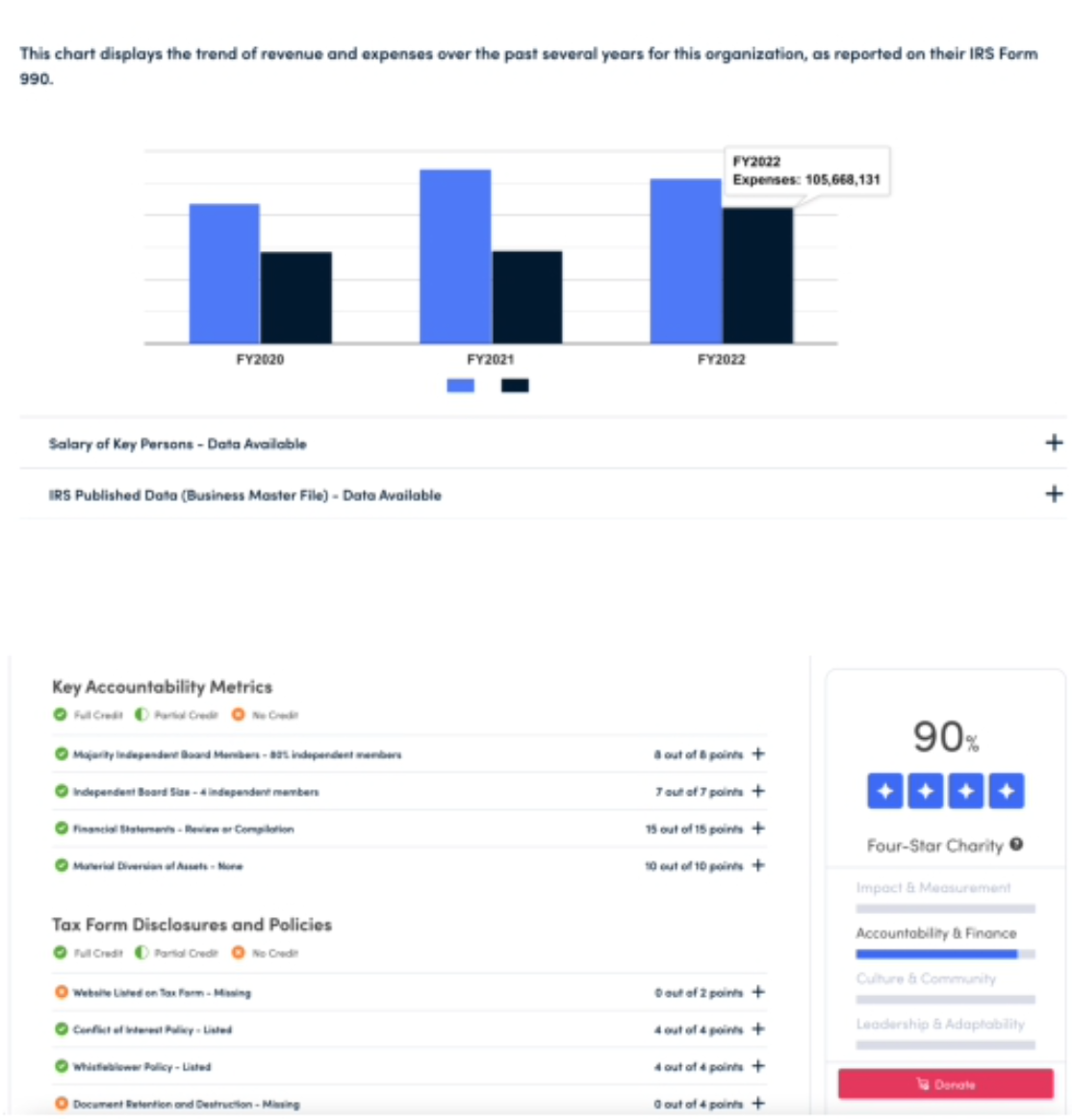
Charity Navigator’s Accountability Metrics. Screenshot: https://www.charitynavigator.org/
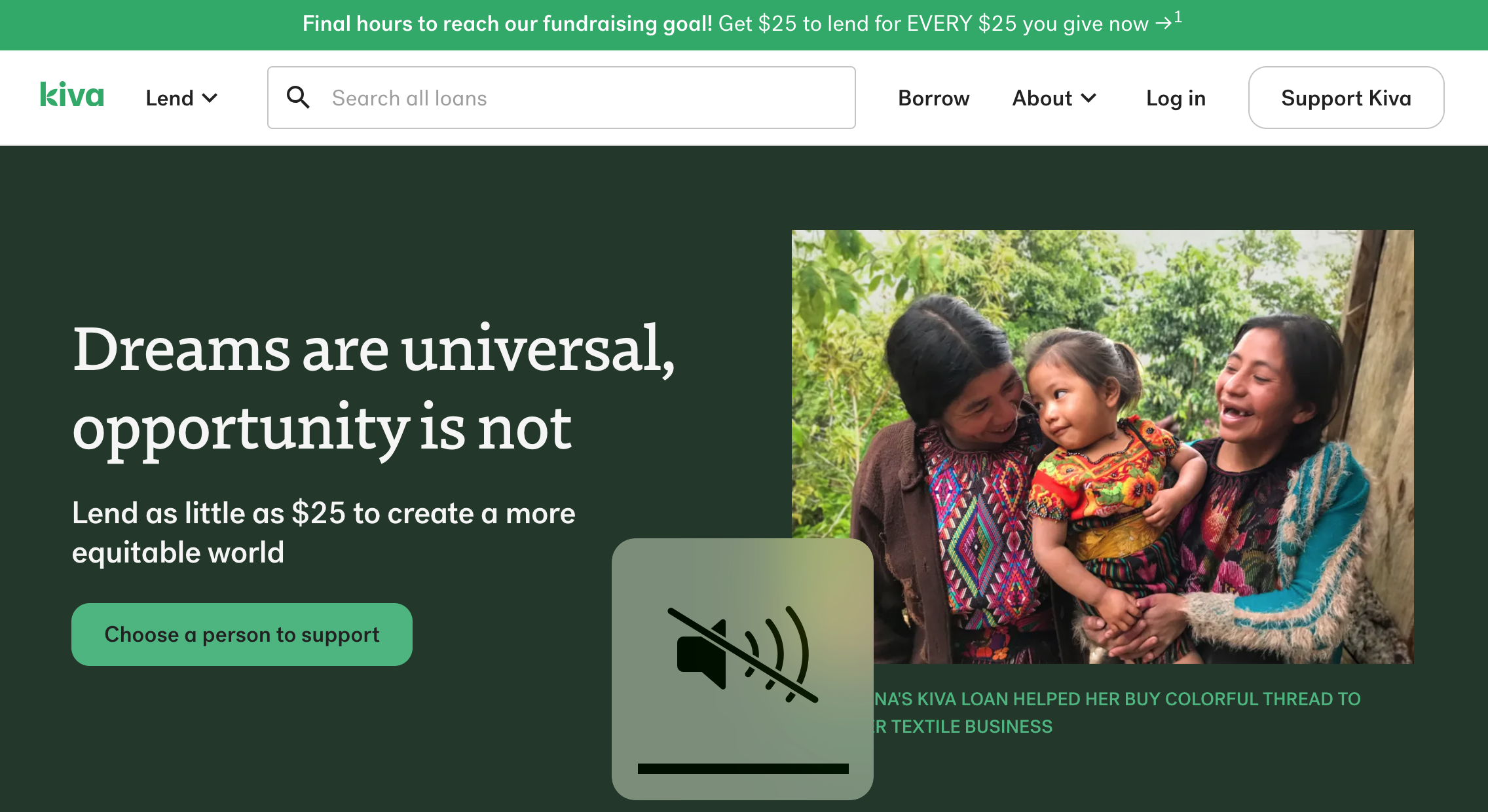
8Kiva’s Landing Page. Screenshot: https://www.kiva.org/
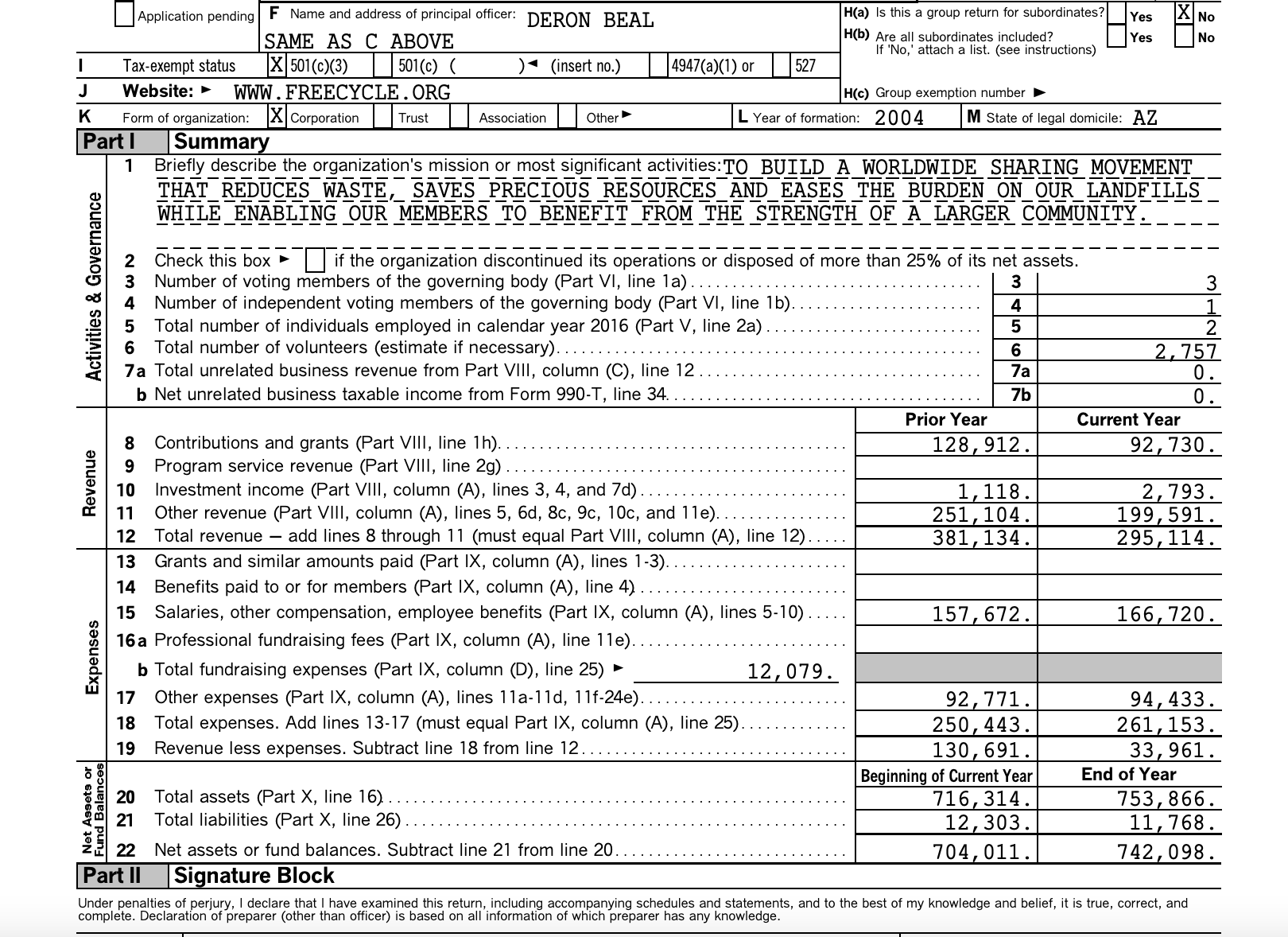
Freecycle’s Form 990. Screenshot: https://www.freecycle.org/pages/about/form990

🟩🟥⬛️⬜️— Felix Gonzalez-Torres "Forbidden Colors" 1988. Instagram Post: https://www.instagram.com/p/CzPSmRhxdMX/?img_index=1
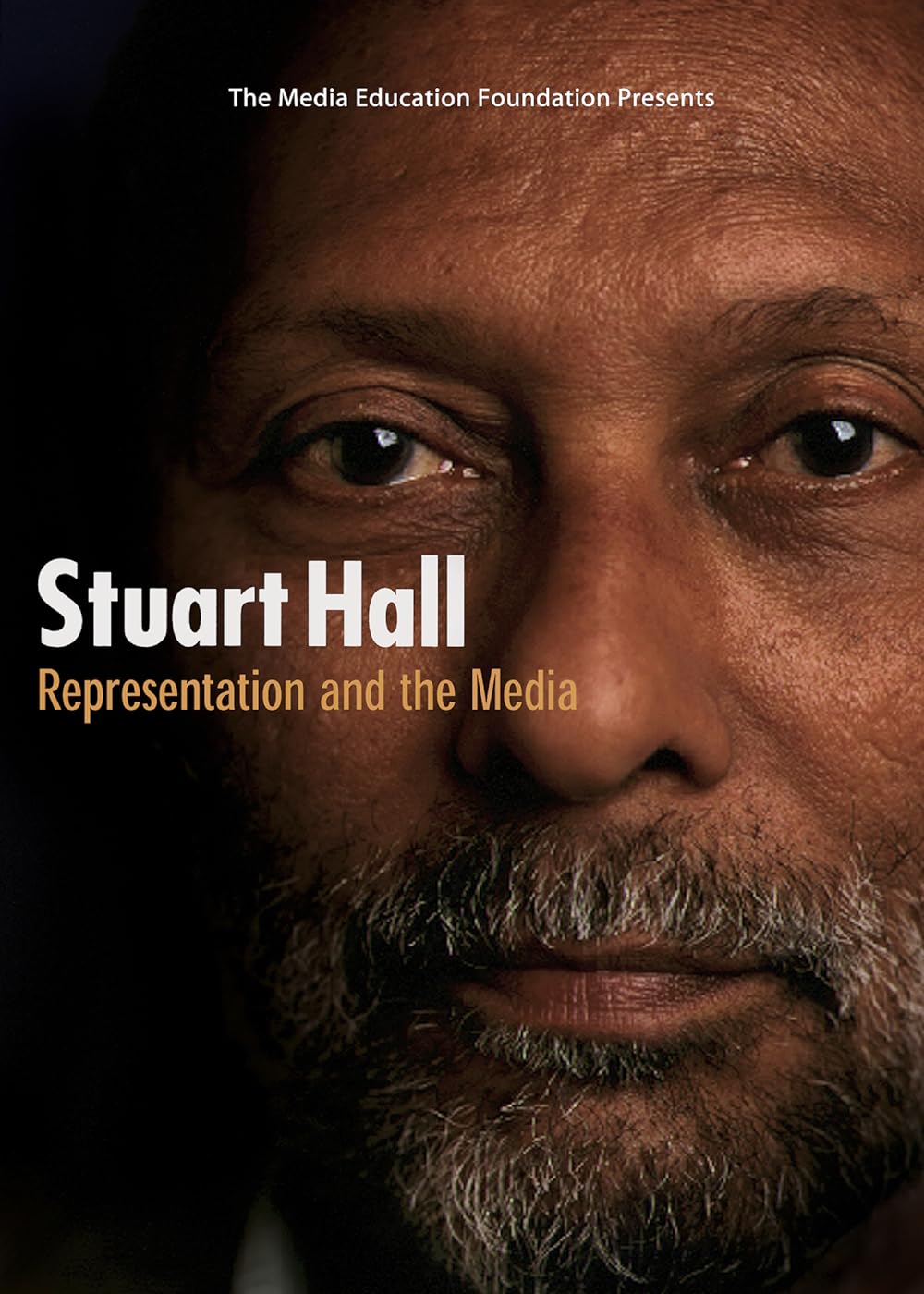
Stuart Hall, Representation & The Power Of The Media (1997)

The 1EARTH logo, George Symonds
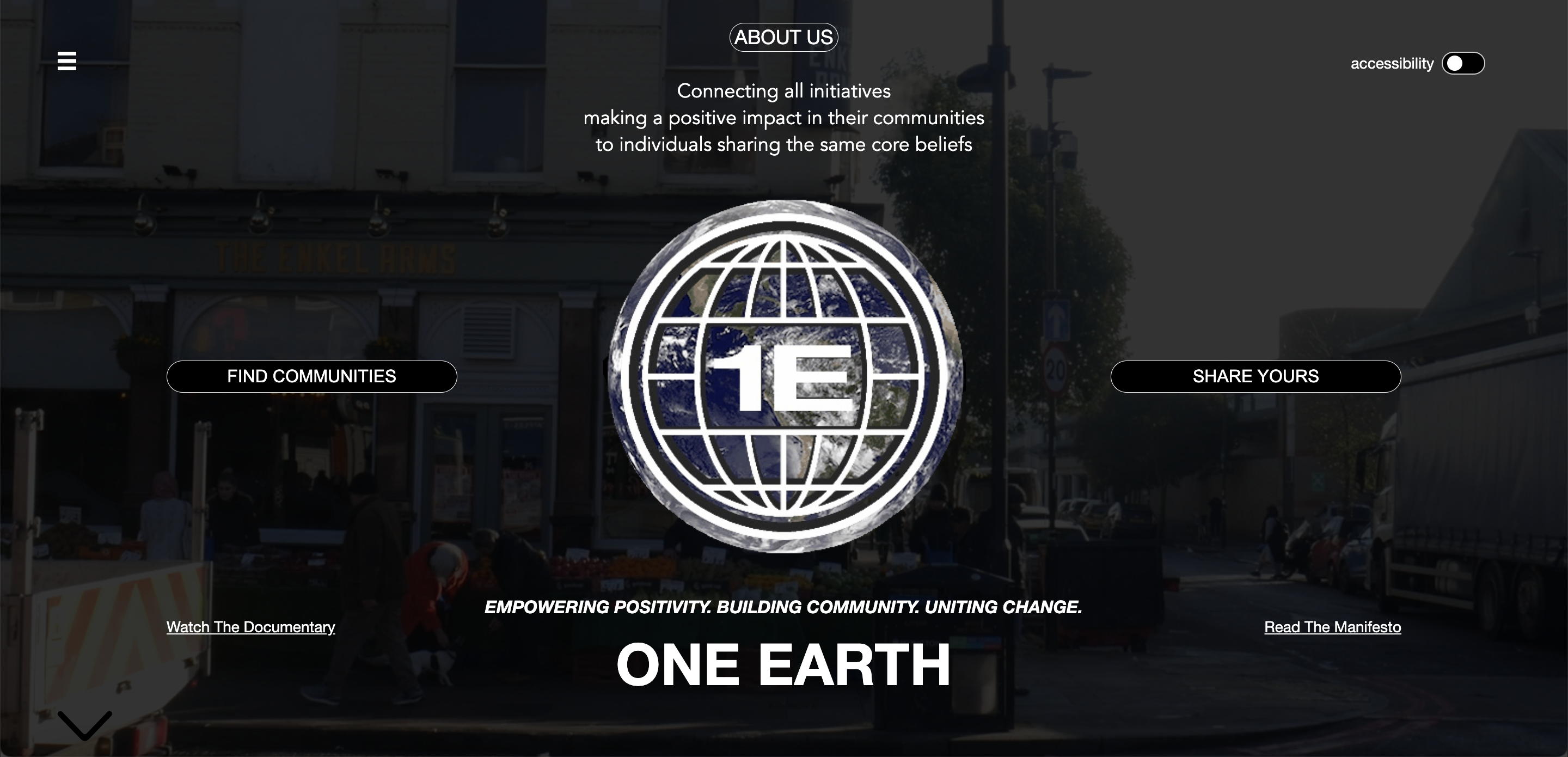
The 1EARTH NETWORK Landing Page
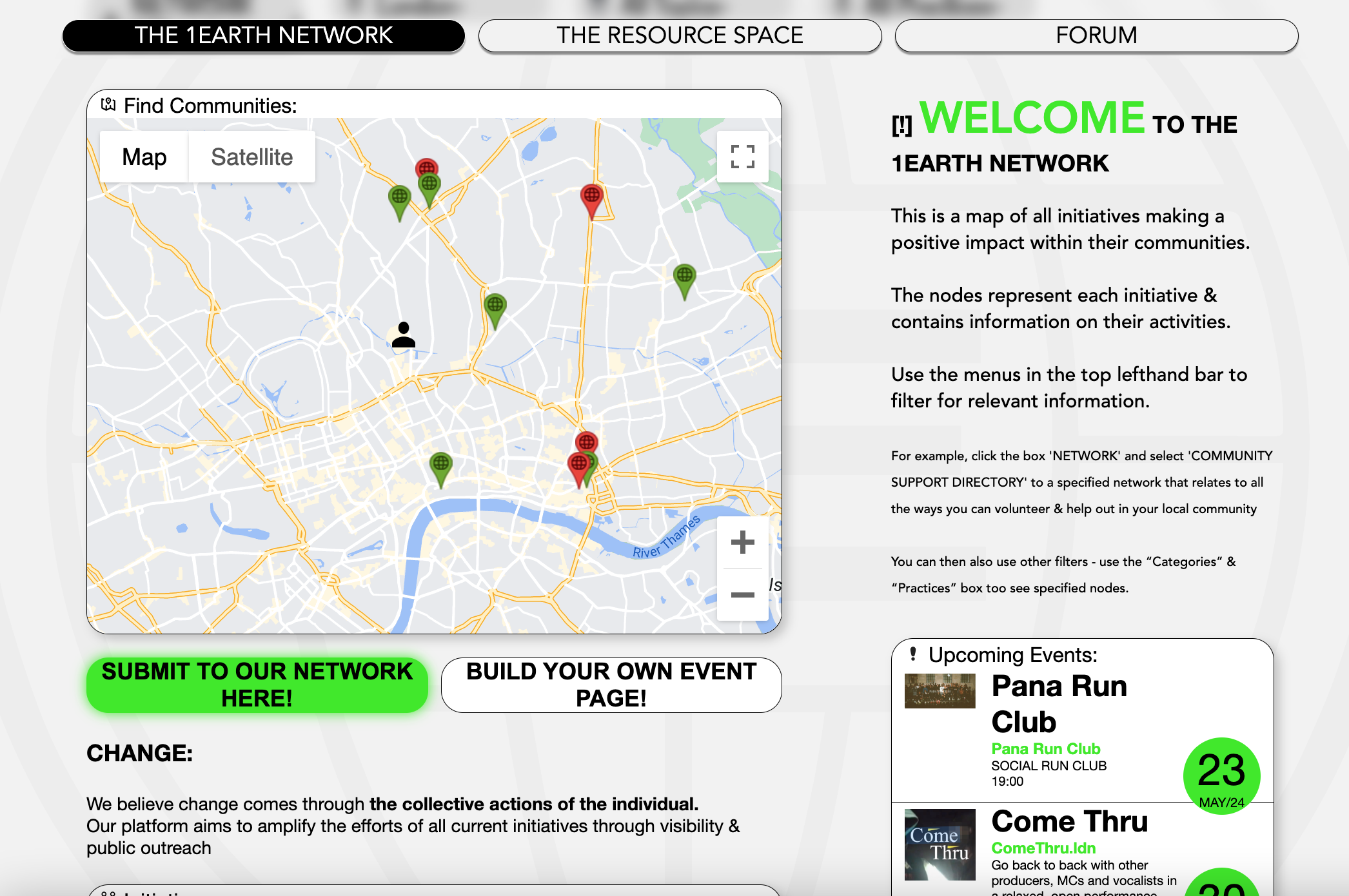
The MAP + Home UI
The MAP + Home UI